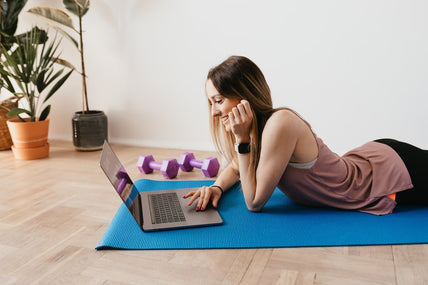6 Questions to Ask To Ensure You're Practicing Safe Sun

As the beautiful weather graces us with its presence this summer, it’s important to have a solid understanding of how to practice safe sun.
1. What’s the difference between sunscreen and sunblock?
Sun protection options fall into two categories: chemical and physical. What we typically call sunscreen is in the chemical category. It contains ingredients that act as filters to reduce ultraviolet rays from penetrating our skin. Sunscreen is usually colorless, odorless, and can only be seen as a thin shiny film on the skin.
Sunblocks on the other hand contain ingredients such as titanium dioxide and zinc oxide which work to physically block ultraviolet radiation. These sunblocks provide protection against both UVB and UVA light.
2. What are UVA and UVB rays?
UVB rays are the ones in charge of sunburns and tend to damage the skin’s epidermal layers. UVB plays a key role in the development of skin cancer and also contributes to tanning and photoaging.
UVA rays account for up to 95% of the UV radiation that reaches Earth. They are less intense than UVB but are far more prevalent, can penetrate through clouds, and are responsible for the tanning of the skin.
Though we love the feel of the sun on our skin, it’s important to note that both UVA and UVB play an important role in conditions such as skin cancer, premature skin aging, eye damage, and suppressed immune systems.
3. Do We Always Need Sun Protection?
In short, yes. It’s a misconception that a cloudy day means we don’t need to wear sunscreen. The truth is, UV rays have the ability to penetrate through clouds, so deciding whether or not to apply sunscreen should not be dependant on the season or weather.
4. Which level of SPF should I choose?
SPF stands for Sun Protection Factor. This refers to the presumed amount of time you can stay in the sun without getting a sunburn. So when you see SPF 30 on a bottle of sunscreen, this means using it properly would allow you to stay in the sun 30x longer than you could without applying broad-spectrum sunscreen. According to the American Academy of Dermatology. SPF 30 is recommended for everyday use, and SPF 50 is recommended for those spending extended time outside. You should also make sure to reapply sunscreen after swimming or sweating excessively. If you are directly in the sun for an extended period of time consider seeking shade or wearing a wide-brimmed hat to protect exposed skin.
5. Will wearing sunscreen cause a vitamin D deficiency?
This one’s a bit of a catch 22. Wearing sunscreen will filter UVB rays, which in turn reduces the amount of rays that reach the skin and stimulate the production of vitamin D3 in the body. Experts say that unprotected sun exposure is not the answer, and instead encourage those concerned about deficiencies to make room for it in their diet. A simple way to do this is to take a high quality vitamin D3 supplement to help maintain healthy bones, teeth, and brain functions.
6. Will it stop me from tanning?
Kinda. Here’s the deal: Sunblock, as mentioned above, helps block UV rays from reaching your skin which will likely prevent any tanning from taking place. Sunscreen, on the other hand, only filters UV rays so it stills allows the skin to tan, just at a slower rate. While this sounds like a bit of a bummer, it’s important to remember that having a tan means your skin has been damaged- and healthy skin is far more important than being bronzed!






